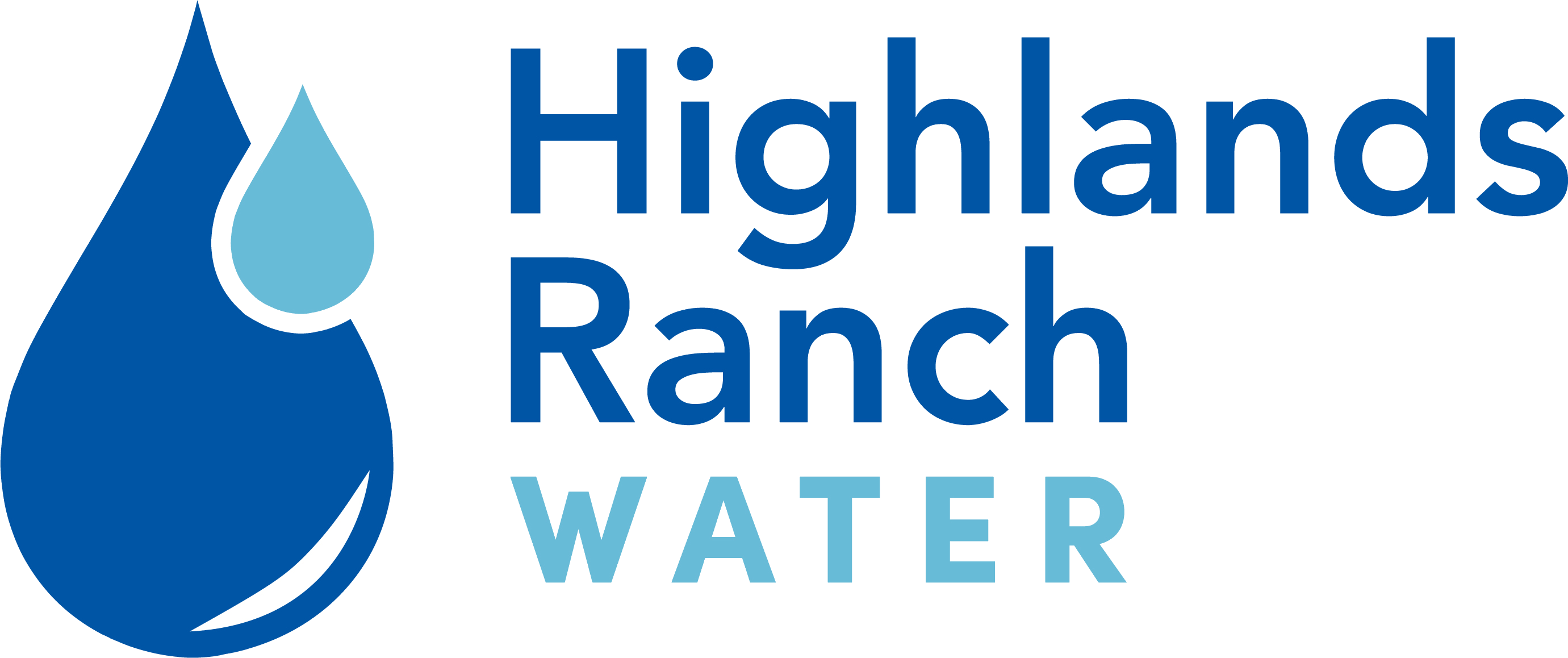Water and Wastewater Rates FAQs
The following FAQs provide answers to commonly asked questions about the water and wastewater rates on your bill.
Water use beyond the water budget requires Highlands Ranch Water to obtain additional sources of water, which are extremely expensive. The different tiers in the rate structure recognize these additional costs. In addition, the tiered rates are designed in order to encourage conservation. The increasing water rates based on usage are common in water supply systems, and are effective at discouraging wastefully high rates of use. Although a few customers find it difficult to adjust to the budget amounts, most have accommodated quite well. This system is intended to raise general awareness of water use levels, both inside and outside the home.
The intent of the rate structure is to increase water conservation, not to increase revenue. It is designed to be revenue/budget neutral. In other words, if every customer conserved wisely and met their water budget, Highlands Ranch Water’s revenue collected would meet the needs of Highlands Ranch Water’s budgeted requirements. An estimated amount of revenue from those customers who pay rates in the more expensive tiers for usage above their water budget amount has been factored into the setting of the rates, so the rates are cost-based in their nature as utility rates should be. If unusually high water consumption takes place and Highlands Ranch Water collects more revenue than budgeted, it assists the district in acquiring additional water.
The bimonthly water service availability fee is designed to cover three key components that are directly related to Highlands Ranch Water's ability to provide a service rather than the ultimate usage of the service:
- The fixed cost of interest payments on debt related to construction
- The cost of customer service (meter reading, billing, etc.)
- The cost of repair and replacement of major equipment.
The debt financed water treatment facilities, major infrastructure, and the acquisition of water rights. In a more conservation-oriented billing structure, it is essential that Highlands Ranch Water be able to collect adequate revenue to cover these fixed costs. It is analogous to your house payment – if you are traveling for a large part of the month you still have to make the entire house payment even if you were not actually using the resource the entire time. In these examples – service availability fees and house payments – the mere availability of the resource has economic costs regardless of the level of utilization of the resource. The water service availability fee is intended to be an equitable compromise between the extremes of rate structures. One extreme is almost all fixed fees to mirror the fixed costs of a utility, but which provides little incentive for conservation. The other extreme is a purely variable fee structure based only on usage which leaves the utility at increased risk of not being able to cover its costs
The wastewater charge for residential customers is $44.17 base plus a charge of $4.75 per 1,000 gallons of wintertime water usage above 3,000 gallons. This is re-evaluated each spring. All new accounts start at a minimum until wintertime usage can be used to calculate their next billing period for budgeting wastewater for the following year.
The wastewater charge for multi-family customers is $22.09 base plus a charge of $4.17 per 1,000 gallons of wintertime water usage above 1,500 gallons. This is re-evaluated each spring. All new accounts start at a minimum until wintertime usage can be used to calculate their next billing period for budgeting wastewater for the following year.
The minimum fee and base fee recover the fixed cost of wastewater operations similar to the water service availability fee recovering the cost of interest on the debt, customer service and major repair and replacement of equipment associated with wastewater facilities. The usage fee is based on the cost of operations and maintenance for our wastewater facilities.
